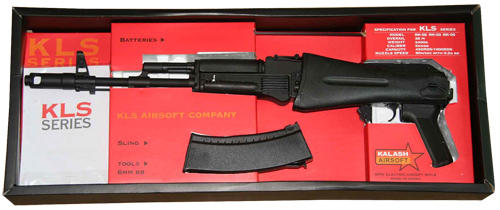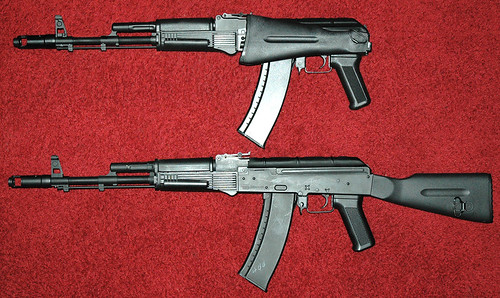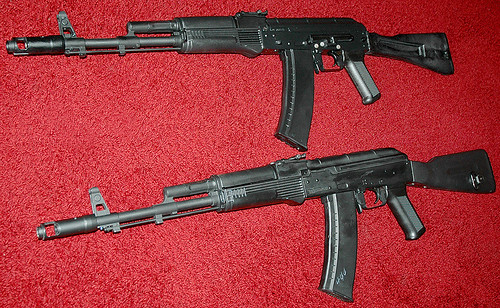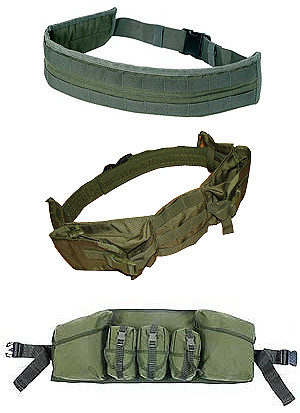The grenades have an amount of citric acid powder in the bottom, which you mix with water. Then in the detonator section, you place some bicarbonate and put a small cap over it, when you press the plunger, these mix and the reaction begins, but I’m getting a bit ahead of myself here…

The AG-01 Grenades
Unfortunately explosive grenades can’t be purchased in the Republic of Ireland due to restrictions on fireworks and I liked the idea of these hand grenades compared to the expensive gas versions. For a pack of 6 grenades, it’s just €24, which is alot cheaper than the gas versions.
I placed an order on their website and was told I would receive a shipping quote the next day. I did not. It was a full seven days later that I received my shipping quote, I decided to forgive them for this and figured maybe they have never shipped to Ireland before and had to do some research on shipping costs. I paid the full amount straight away via paypal, shipping was €12 by the way, bringing the total to €36.
In the shipping quote, I was told I would receive a tracking number within 24 hours. I did not. After two days, I decided to email them and find out what was going on with the order, at this stage I wasn’t too bothered, but I didn’t even receive anything to say they had received my payment and so I thought maybe my payment had gone missing.
There was no reply to that email and another two days later, I emailed again asking what was the status of my order. Again, there was no reply.
The weekend passed and on Monday I decided I would atttempt to contact them once more before getting onto Paypal or my credit card company to cancel the payment. This time I decided to use the contact form on their website, I politely informed them I would like a tracking number in 24 hours or I will have to contact Paypal. The next day I finally received a reply, oh what humble apologies and excuses lie within?
Hello, this is the reference number: xxxxxxxxxxxx www.ups.es
Best regrast
I was not impressed, at the very least some form of excuse would have been nice. Thankfully I had the intelligence to work out that I should visit the ups.es website and input the given reference number to find out where my package was  .It still hadn’t left for Ireland. A day or two later, the ups website updated and the order was scheduled for delivery on the 24th, woohoo, finally!
.It still hadn’t left for Ireland. A day or two later, the ups website updated and the order was scheduled for delivery on the 24th, woohoo, finally!
The 24th came…. and went, checked the tracking website that night and apparently
“The Package Was Missed At The UPS Facility”
Silly UPS, oh well, they’ll deliver it tomorrow…or maybe not, the next day it was:
“The Receiver Is Not Listed On The Building Directory.”
I’d like to know exactly what building directory they expect to see at a residential address? So this was Friday and I was pissed, mildly annoyed that I wouldnt have them for Saturday’s skirmish in HRTA. No big deal, can always use them next week. So Monday came along and I checked the tracking again around lunch time to see if my package would be delivered, apparently they managed to leave it at the UPS facility again, my poor package must be getting lonely, at this stage I was quite annoyed at UPS and decided I would go collect the bloody thing myself. Arranged to go and collect it at their depot (on the opposite side of the city) and did so this morning, Tuesday 29th, a full 22 days after I placed my order online, if the package was coming by ground from some obscurely named city in Russia, I might expect this kind of delivery period, but Madrid?
So granted the mix up with UPS when the package left Madrid was not the fault of airsofthandgrenades.com and I realise this, but even before it was shipped, their service up to that point was terrible, no replies to emails, promising things in 24 hours and then taking a week to do them. It’s just not a sign of a good retailer, but alas.. they may be redeemed yet if the product lives up to the hype on their website.
I’m sorry to say it does not, the downhill slope of this review just continues from here.
So I picked up the package on my way to work this morning, when I got into work I opened it up and had a look, 6 grenades body’s, 6 little bags containing the components for the detonator, 6 small bags of bicarbonate and 2 Power Boost tubes (more on these later). The box is nicely presented, made of recycled brown cardboard and has some various images of the AHG-01 on the outside. There are also some instructions in English and Spanish which explain how to put the whole thing together and some diagrams to go with it. I put one together and left it on my desk for the day, unfortunately I dont think exploding grenades go down so well in an office environment, although I was very tempted :).

What mystical treasure lies within?

The grenades in their packaging.
Got home and tested them out, first you pour some water into the bottom of the grenade body and mix it with the citric acid, once you have the detonator assembly put together, pour in some bicarbonate and put the cap on, when it’s all put together, the grenade looks quite nice.

The assembled grenade.
So here we go, camera ready and recording, pull the pin out, give it a shake and throw it onto the patio outside. And hiss… splutter… gurgle… not quite the boom I expected. Turns out the detanoter wasn’t screwed tight enough and the CO2 was just escaping through the top. Their is an o-ring to seal it too, but obviously this wasn’t working.
Take 2: The detonators are re-usable so I cleaned it out and put some more bicarbonate in. Got a fresh grenade body and added some water. Here we go again, being sure to tighten the cap as tight as possible this time. Pull out the safety pin, press the detonator, shake, throw and………………..nothing. No boom, no hissing air escaping either. I waited a minute to see if the pressure would build and then maybe it might blow, it didn’t. I hesitantly approached the grenade and unscrewed the top, only to let out a gust of CO2. Whoops…
Take 2.5: At this stage I was getting worried I would run out of citric acid and decided to try using vinegar instead, this didn’t go so well either and I just ended up with more hissing and gurgling, only this time it smelled like vinegar too.
Take 3: Ok, this time it’ll work, this time it better work. Same procedure as above, shake it, throw it and…… nothing again! WTF?!?!? God Dammit, I walked away for a minute and wondered would it blow as I turned my back, no such luck. I walked over and picked it up, it was pretty solid with the pressure built up inside, but no boom, so I stepped back and threw it on the ground….. BOOM!!!!!! Finally!! Woohoo!
There’s actually quite a nice bang of these, especially for something that is just a very basic chemical reaction. The entire body of the grenade was blown to pieces and spread out over about a 10ft diameter, definitely not re-usable, add a few bb’s into the body and you could definately use these for room clearing.
But I still wasn’t happy, the video on the AHG website shows a AHG-01 being placed on the ground and it detonates seconds later, no throwing it hard against the ground, just wait and boom. I wanted to replicate this. I decided to try again.
Take 4: Guess what? It didn’t work again, the seal wasn’t tight enough, so I thought maybe the detonator had been damaged and decided to try yet again.
Take 5: Built a fresh detonator this time around, but yet again, I got plenty of white foam and hissing and gurgling, but no boom.
I decided I had wasted enough for today and put the grenades away. I now have 1 grenade body left with citric acid still in it, 4 body’s with no citric acid, 4 unassembled detonators, 1 broken detonator and 1 working detonator.
The one time they worked, I was actually quite surprised by the noise of the grenade going off and would have definately gotten a few kills had I put bb’s in and used them in a skirmish. The second time I tried it, when I released all the gas by mistake, it would have actually blown up had I thrown it on the ground, but like I said earlier, this does not replicate how they are shown in use, having to throw them against a hard surface may not work in the middle of a skirmish.
Unfortunately, I dont think the AHG-01 is going to revolutionize the airsoft grenade industry the way it’s creators envisioned. It’s a great idea in theory, and when it works it’s impressive, but the hit and miss nature of the product coupled with their rather bad customer service has left me rather dismayed. I really would have liked to see this product work since gas grenades are so expensive and explosives cannot be used in Ireland, but I think I’ll be putting my money into a gas grenade now instead.
Thanks to:airsofthacks.com






























